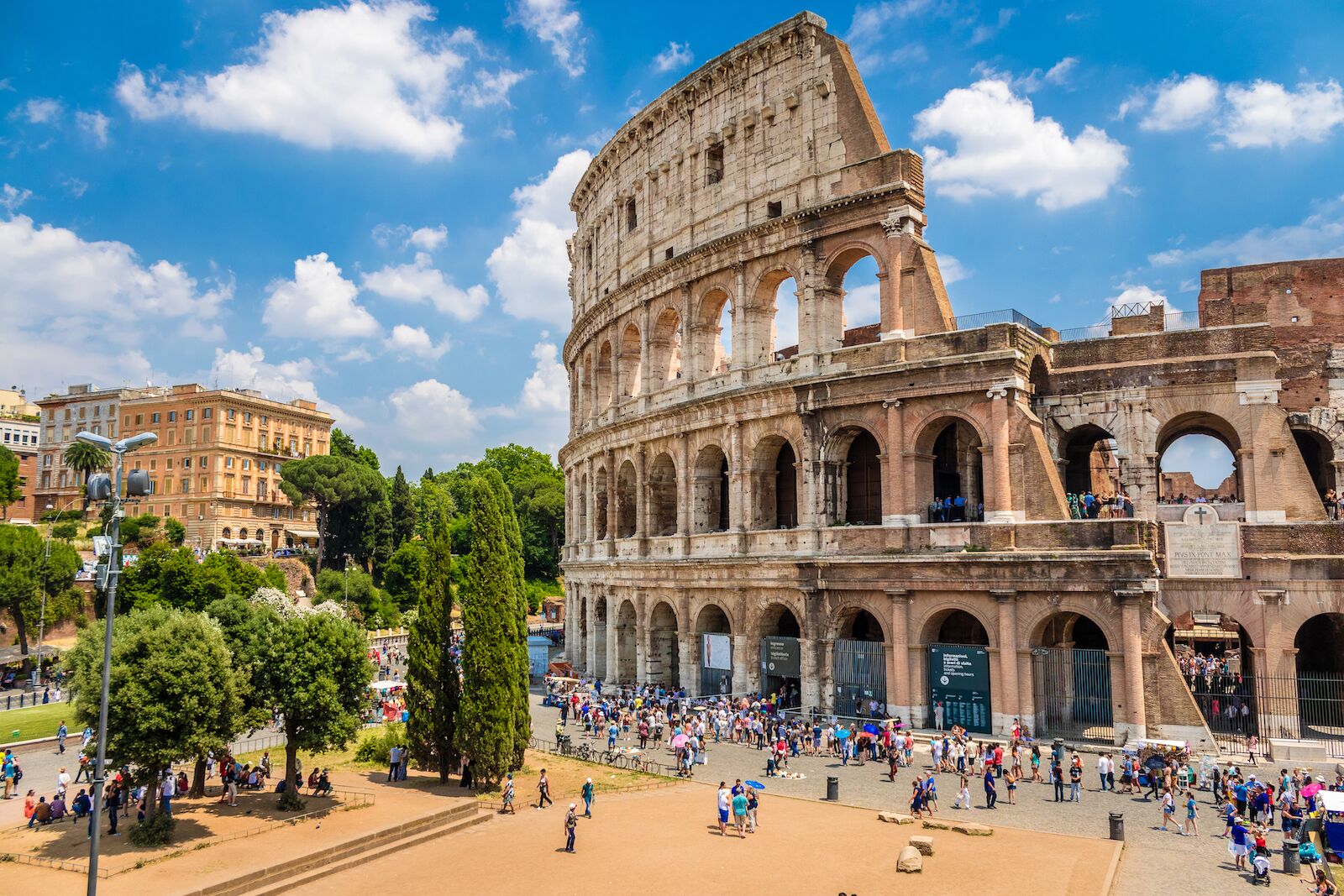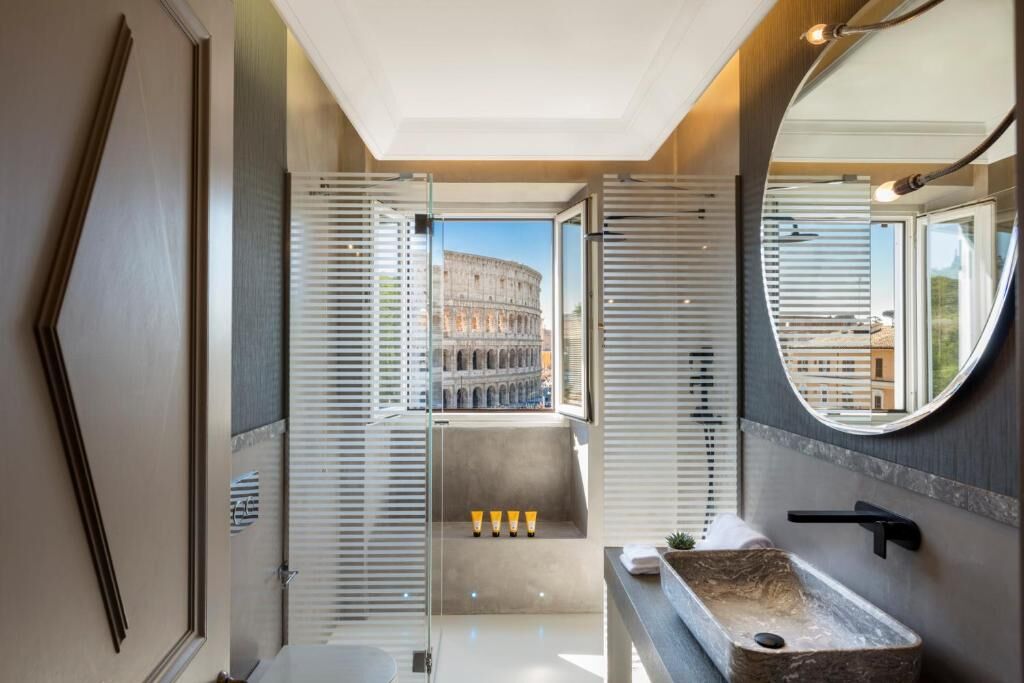There was more than one colosseum in the Roman world. In fact, there were possibly dozens of them spread around the vast empire, from France to Tunisia to Libya and Italy. Some are still in use for various performances, including the magnificent one in Verona, Italy, that hosts concerts and operas, or the famous bullfighting venue in Arles, France. But only one of them is simply referred to as “the Colosseum” and that’s the one in Rome. The largest amphitheater in the former Roman world, it is today the most famous of all and has become the most visited structure in the Eternal City.


Everything You Did Not Know About the Colosseum, the Most Visited Attraction in Rome
- Where is Rome’s Colosseum located?
- How to get to the Colosseum in Rome
- When was the Colosseum built and why?
- why is the Colosseum called the Colosseum
- Rome’s Colosseum in numbers
- Five facts about the Colosseum
- How much does it cost to visit the Colosseum?
- Visiting the Colosseum for free
- When does the Colosseum open and close?
- How long should you spend at the Colosseum?
- Where to stay in Rome to be near the Colosseum
Where is Rome’s Colosseum located?

Viacheslav Lopatin/Shutterstock
The Colosseum, like most points of interest in Rome, is located in the historical center of Rome, a 5.4-square-mile area that is listed as a UNESCO World Heritage site. More specifically, the famous amphitheater is located in the neighborhood of Ancient Rome, which encompasses the Roman Forum, Palatine Hill, and Circus Maximus.
How to get to the Colosseum in Rome
There are several ways to get to the Colosseum using public transport. Metro line B and tram line #3 will take you there directly. The metro and tram lines are depicted in blue and green respectively on the public transport map of Rome. If you prefer to ride the bus, bus lines 51, 75, 81, 85, 87, 118 are all stopping by the amphitheater.
When was the Colosseum built and why?
The construction of the Colosseum started between 70 and 72 CE under Emperor Vespasian and was inaugurated in 80 under the reign of his son, Emperor Titus. The structure was completed under Titus’ brother and successor Domitian in 83. The amphitheater has been standing in Rome for nearly 2,000 years.
The Colosseum was built as an entertainment venue for the Romans who could attend spectacles such as gladiator games and animal hunts.
In the year 438, the gladiatorial games were abolished and the Western Roman Empire collapsed in 476, leaving the Colosseum to slowly degrade.
Why is the Colosseum called the Colosseum?
The Colosseum was built near a large statue of Emperor Nero titled “The Colossus of Nero.” A colossus is a statue of extreme size and proportions.
The term colosseum is now commonly used to describe Roman amphitheaters.
Rome’s Colosseum in numbers

Viacheslav Lopatin/Shutterstock
- When it was completed, the Colosseum could host a maximum of 50,000 spectators.
- In 2019, the Colosseum attracted 7.6 million visitors. It is estimated that about 6 million people visit the amphitheater every year, making it the most-visited attraction in Rome.
- The Colosseum has an elliptical shape (oval) and measures 615 feet in length and 510 feet in width.
Five facts about the Colosseum
- The Colosseum is also known as the Flavian Amphitheater because it was built during the reign of the Flavian emperors.
- Initially, the Colosseum was fitted with mechanized giant awnings made of animal skins that would provide shade for the spectators.
- In the 15th-century, the Colosseum was used as a quarry, and building material from the structure was used in the construction of St. Peter’s Basilica.
- Pope Sixtus V (1585 to 1590) wanted to turn the Colosseum into a wool factory and demolish part of the structure in the process.
- In the 1850s, amateur English botanist Richard Deakin found more than 420 varieties of plants growing among the ruins of the Colosseum, some of which were then found nowhere else on the European continent.
How much does it cost to visit the Colosseum?
Tickets to visit the Colosseum Archeological Park must be booked in advance online. Download the official app of the Parco Archeologico del Colosseo prior to your visit; from there you can book your tickets and access all necessary information about the site.
There are two types of tickets available on the official website/app for prospective visitors to the Colosseum Archeological Park:
- 24h — Colosseum, Roman Forum and Palatine ticket: This ticket includes a single entrance to the Colosseum (no access to the arena); a single entrance to the archaeological area of the Roman Forum, Imperial Fora, and Palatine; access to temporary exhibitions. This ticket is valid for one day and costs $16.95 (€16 euros).
- Full Experience ticket: This ticket includes a single entrance to the entirety of the Colosseum; a single entrance to the Roman Forum and Palatine Hill; and access to temporary exhibitions. This ticket is valid for two consecutive days and costs $23.30 (€22 euros).
The official app of the Parco Archeologico del Colosseo allows visitors to purchase their own audioguide.
If audioguides are not your thing, there is a variety of official guided tours available, including guided visits of the amphitheater underground levels, after-sunset visits, and more. Book your guided tour online in advance.
Note that some independent operators, such as City Experiences, City Wonder, Viator, and more, also offer guided tours that will allow you to skip the lines.
Visiting the Colosseum for free

Nicola Forenza/Shutterstock
On the first Sunday of every month, free tickets are available to visit the Colosseum Archeological Park. Tickets are on a first-come, first-served basis and are available at the ticket office in Piazza del Colosseo.
When does the Colosseum open and close?
The hours of operation of the Colosseum Archeological Park vary throughout the year.
- March 1 to March 25: From 9 AM to 5:30 PM
- March 26 to August 31: From 9 AM to 7:15 PM
- September 1 to September 30: From 9 AM to 7 PM
- October 1 to October 28: From 9 AM to 6:30 PM
- October 29 to December 31: From 9 AM to 4:30 PM
The Colosseum Archeological Park is closed on December 25 and January 1.
How long should you spend at the Colosseum?
If you’re visiting independently with your audioguide or guidebook, set aside 1.5 hours to visit the Colosseum on its own. Allow at least three hours if you’re visiting the other sites included in your ticket.
Where to stay in Rome to be near the Colosseum
We hope you love the spaces and stays we recommend! Just so you know, Matador may collect a small commission from the links on this page if you decide to book a stay.
Hotel Palazzo Manfredi
A six-minute walk to the Colosseum, this five-star hotel has only twelve rooms and two suites, providing guests with an intimate experience. Suites with views of the Colosseum are available, as well as rooms and suites with vistas on the Forum and other beautiful part of the Roman neighborhood of Ancient Rome. There is a fitness center with surprising views on the Colosseum, too. The decor inside this luxury property includes contemporary furniture mixed with classical art for an elegant and modern atmosphere. The Hotel Palazzo Manfredi has a Michelin-starred restaurant on site, as well as an upscale cocktail bar, both of which have terraces with views on the Colosseum so you never lose site of Rome’s star attraction, no matter where you are.
The Fifteen Keys Hotel
A 14-minute walk to the Colosseum, the Fifteen Keys Hotel is a four-star property located in the neighborhood of Monti. The property consists of 15 rooms in a recently renovated five-story townhouse. The decor inside this lovely hotel is fresh and elegant, making guests feel at home in clean, bright, and simple rooms. The hotel offers a superb breakfast (to be had inside or in the leafy courtyard) and has a bar on site. There is also an airport shuttle to facilitate guests’ arrivals and departures.
Hotel Capo d’África


The Hotel Capo d’África is a four-star hotel located only nine minutes away on foot from the Colosseum. The decor is very simple, without any particularly standout features, but the property is clean, comfortable, and has a wonderful cozy rooftop terrace with views of the Ancient Rome neighborhood where you can enjoy breakfast or a drink from the on-site bar.
If you prefer a private rental to a hotel, check out Matador‘s selection of Airbnbs with views on the Colosseum.





